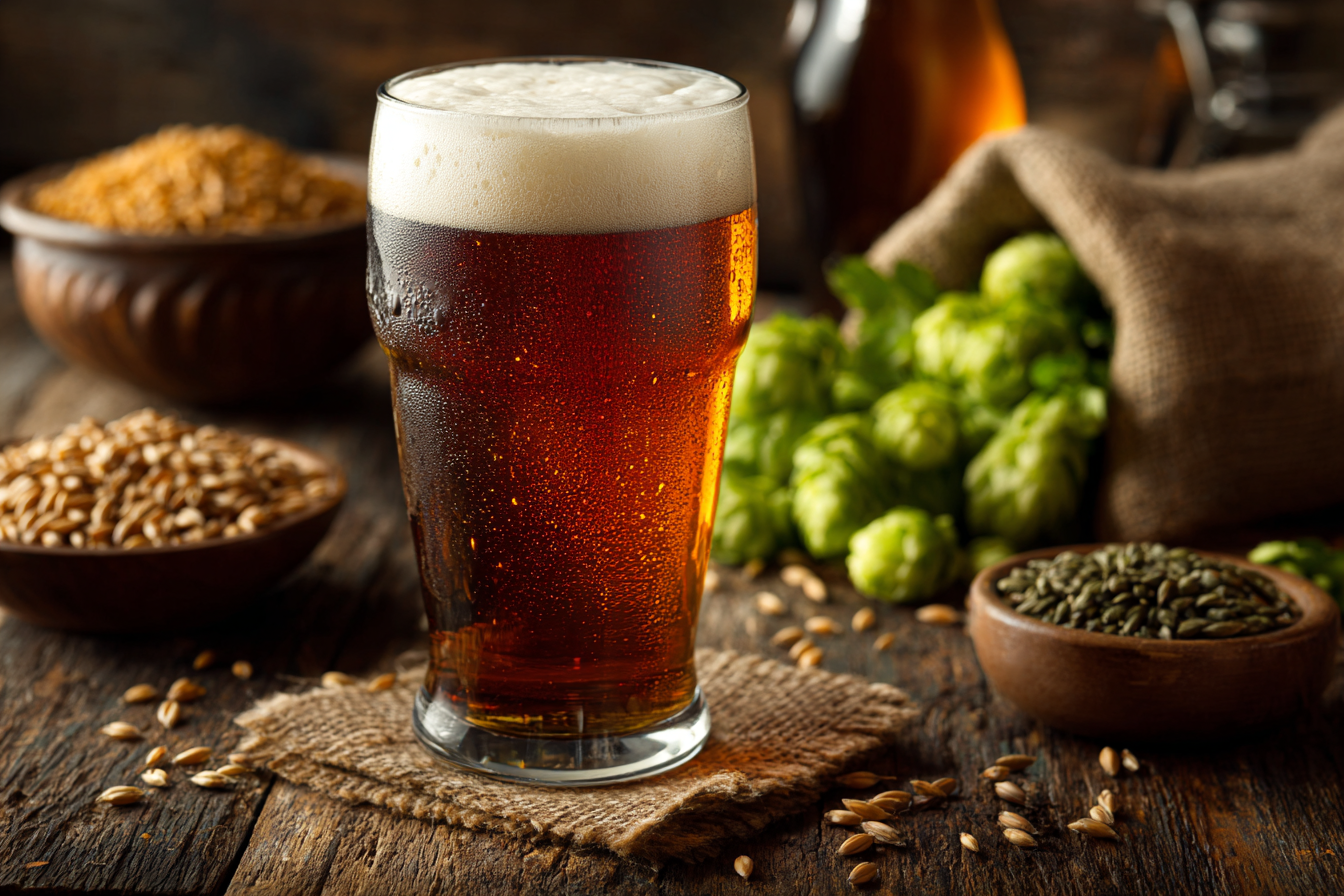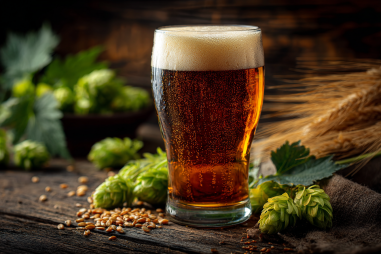American Amber Ale stands out in the beer world with its rich amber hue and a balanced medley of malt sweetness and hop bitterness. This beloved style owes much of its distinctiveness to the careful selection and combination of ingredients that give it both character and charm. From the choice of malts to the wild nuances added by yeast, and even the subtle influence of water, each component plays a vital role in creating a beer that’s as enjoyable as it is flavorful. Let’s explore the key ingredients that come together to craft the unique personality of American Amber Ale.
Understanding the Core Ingredients of Beer
Before diving into the specifics of American Amber Ale, it’s helpful to review the fundamental building blocks of most beers. The four main ingredients are malted grains, hops, yeast, and water. Each one shapes the beer’s final appearance, aroma, taste, and mouthfeel. Malt provides the sugars necessary for fermentation and contributes color and flavor. Hops introduce bitterness and aroma, balancing the sweetness of malt and preserving freshness. Yeast ferments sugars into alcohol and carbon dioxide but also produces flavorful esters and phenols. Lastly, water, often overlooked, greatly affects the perception of flavors and can influence the brewing process itself.
Malt Types: Caramel, Crystal, and Base Malts
The backbone of American Amber Ale’s distinctive amber color and rich flavor largely comes from the malt bill. A carefully chosen combination of base malts and specialty malts creates the right balance of sweetness, body, and color.
Base Malts: Most American Amber Ales rely on 2-row pale malt as their primary base. This malt provides a clean, fermentable sugar profile and a light malt character that doesn’t overpower the other ingredients. It forms the foundation on which flavor complexity is built.
Caramel and Crystal Malts: These specialty malts are integral in crafting the beer’s signature amber shade, along with deep caramel, toffee, and sometimes slightly burnt sugar notes. Caramel malts are kilned in a way that caramelizes the sugars inside the malt kernel, contributing sweetness, richness, and body. Crystal malts, a specific category within the caramel malt family, come in a range of color intensities (measured in Lovibond), with medium to dark crystal malts being popular for amber ales. They add complexity and enhance mouthfeel and color, making the beer delightfully smooth and flavorful.
Typically, brewers will blend around 10-25% specialty malts into the total grain bill for an amber ale, balancing malt complexity without becoming too heavy or sweet.
Hop Varieties and Their Flavor Contributions
American Amber Ale is known for a harmonious balance between malt sweetness and hop bitterness, showcasing hop character without dominance. The hop varieties used often reflect American hop strains, which tend to be bold, aromatic, and flavorful.
- Cascade: Perhaps the most iconic American hop, Cascade brings floral, citrusy, and grapefruit notes. It’s often used in both the bittering and finishing stages to highlight bright aromatics.
- Centennial: Known as a “super Cascade,” Centennial provides aggressive citrus and pine flavors, contributing a sharp bitterness that balances malt richness well.
- Chinook: This hop delivers piney, resinous, and spicy undertones. It’s favored for its robust character, helping amber ales to have a noticeable but smooth bitterness.
- Amarillo and Simcoe: Both add complex fruity and tropical notes, like orange, apricot, and berry, giving a modern twist to a classic style.
The bitterness level in American Amber Ale usually falls within a moderate range of 30 to 40 International Bitterness Units (IBU), enough to cut through malt sweetness while complementing it. Hop timing in the brewing process also matters: late additions and dry hopping enhance aroma and flavor without increasing harsh bitterness.
Yeast Strains Ideal for Amber Ales
The yeast used in American Amber Ale is typically an American ale yeast strain characterized by a clean fermentation profile with subtle fruity esters. This allows the malt and hops to shine while adding delicate complexity.
Common yeast strains include:
- American Ale Yeast (e.g., Wyeast 1056 / White Labs WLP001): Known for a clean and neutral flavor profile, it ferments well in a wide temperature range and produces a balanced beer without overpowering esters.
- California Ale Yeast: Similar to American Ale yeast, it emphasizes a clean finish, making it a popular choice for showcasing malt and hop harmony.
Some brewers experiment with yeast strains that contribute mild fruity notes (like slight apple or pear) to complement the malt complexity but avoid overbearing flavors that would distract from the overall balance.
Water Chemistry and Its Influence
Water might seem like a simple ingredient, but its mineral content can profoundly affect beer flavor and quality. Water’s pH, hardness, and the presence of specific ions like calcium, sulfate, carbonate, and magnesium all influence mash efficiency, yeast health, hop perception, and mouthfeel.
For American Amber Ale, brewers typically prefer water profiles with:
- Moderate to high sulfate levels: Sulfates enhance hop bitterness and crispness, preventing malt sweetness from feeling cloying.
- Balanced carbonate levels: Carbonates help buffer mash pH, especially given the darker specialty malts which tend to lower mash pH.
- Good calcium levels: Important for yeast performance and clarity.
The ability to adjust and balance water chemistry allows brewers to accentuate certain aspects of the malt profile or hop expression. For example, raising sulfate levels can emphasize hop crispness, while keeping balanced carbonate content helps maintain a smooth mouthfeel.
Ingredient Sourcing and Quality Considerations
The quality and origin of ingredients play a vital role in consistently producing excellent American Amber Ales. Brewers often seek out malt from reputable malting companies that ensure uniform kilning and moisture content. Specialty malts should be fresh to avoid stale or off-flavors.
When it comes to hops, freshness is crucial for maintaining vibrant aroma and flavor. Using whole cone hops or high-quality pellets stored in vacuum-sealed conditions helps preserve their essential oils.
Yeast health is equally important. Using a fresh, active yeast culture or a properly maintained starter ensures clean fermentation and desired flavor outcomes.
Water quality is controlled through filtration and treatment, with many brewers customizing water profiles by adding brewing salts according to their recipe needs.
Attention to detail in sourcing results in a cleaner, more flavorful beer that truly reflects the characteristics expected of the American Amber Ale style.
Crafting Flavor Through Focused Ingredients
The magic of American Amber Ale lies in the thoughtful balance of each ingredient type. The interplay of malts provides warmth, depth, and that signature amber color. Hops contribute crisp bitterness balanced by aromatic citrus and pine nuances without overshadowing the malt character. The yeast ferments cleanly, contributing subtle esters that enhance the complexity. And water chemistry fine-tunes the sensory perception, making every sip smooth and satisfying.
Every brewing choice from malt percentages to hop varieties, yeast strain selection, and water profile adjustment shapes the beer’s final identity. For brewers and beer lovers alike, understanding these ingredients not only deepens appreciation but also empowers anyone interested in crafting or savoring this classic American style.







